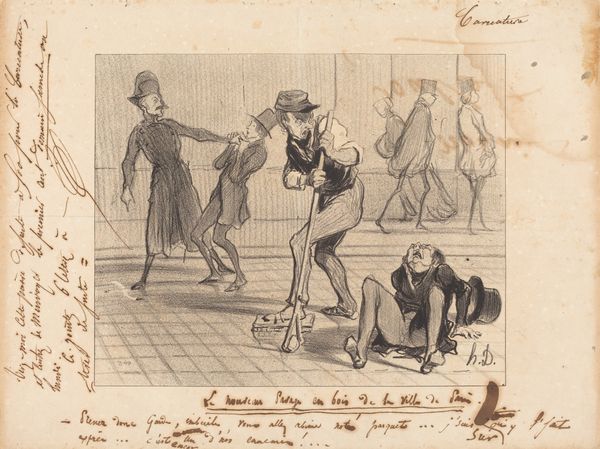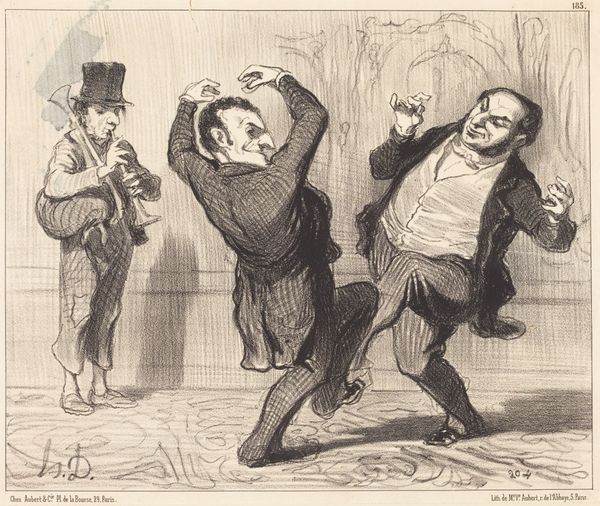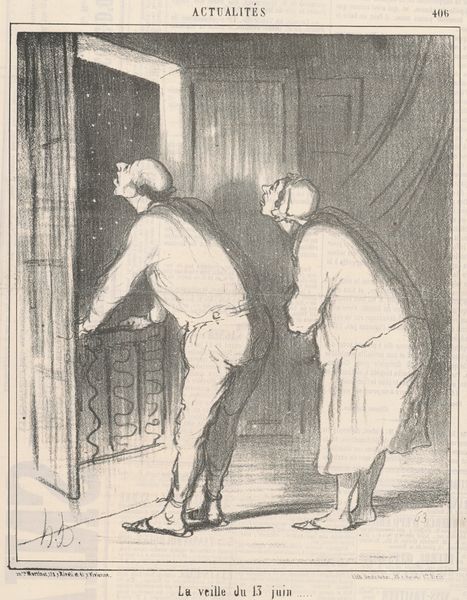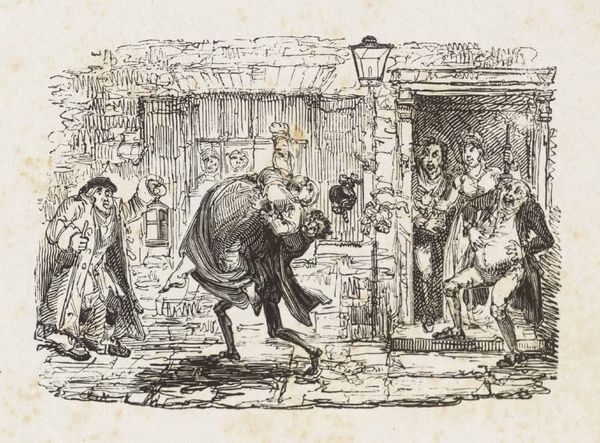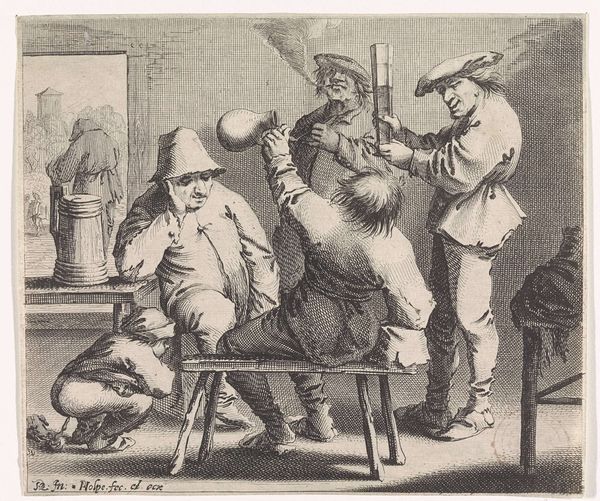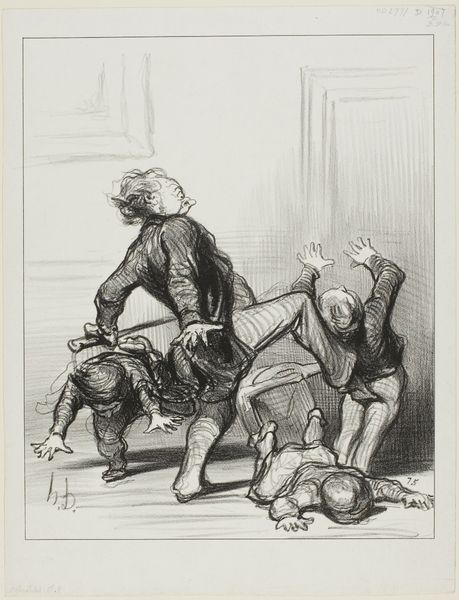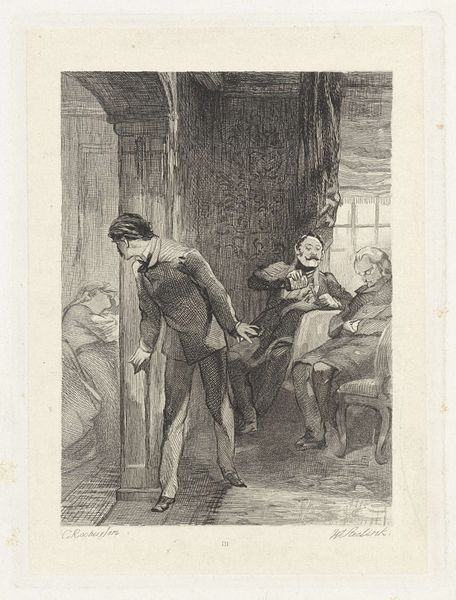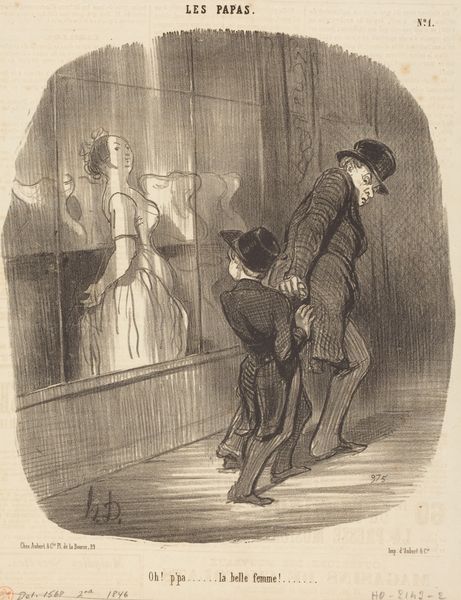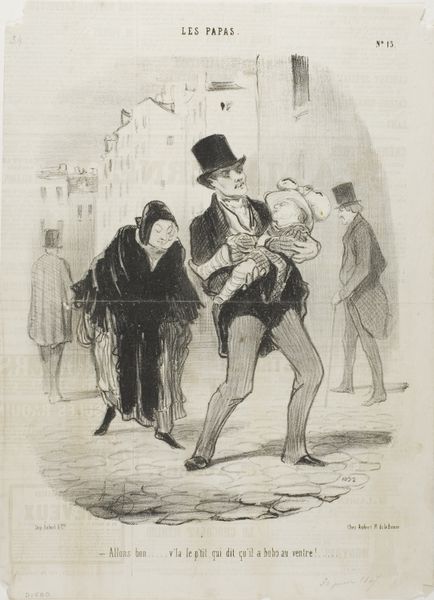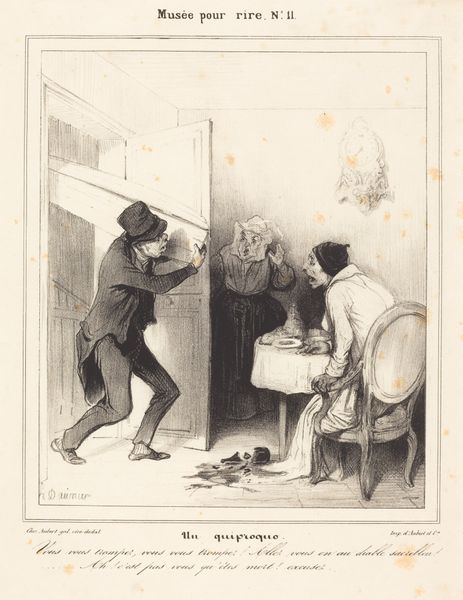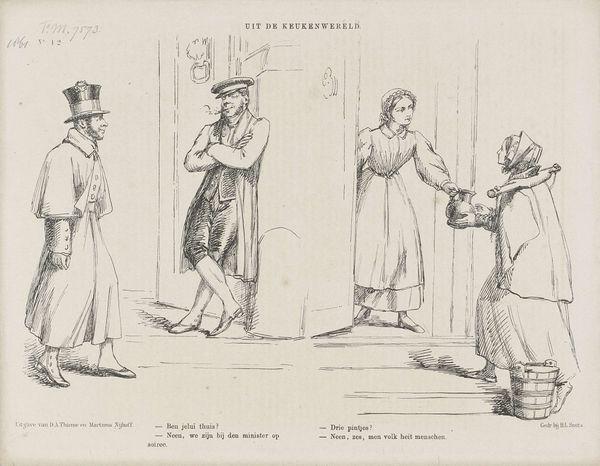
drawing, lithograph, print, pen
#
drawing
#
lithograph
# print
#
caricature
#
pencil sketch
#
figuration
#
romanticism
#
pen
#
genre-painting
#
realism
Copyright: National Gallery of Art: CC0 1.0
Curator: This lithograph, created in 1847 by Honoré Daumier, is titled "Entre deux plongeons," or "Between two dives." Editor: My initial reaction is that there is a really melancholic atmosphere in the piece. Is it the artist's skillful use of light, the facial expressions of the figures or just the muted palette that gives that effect? Curator: It's interesting you pick up on that melancholy. I wonder if the setting contributes to it? The suggestion of a public bath house, full of social rituals and implied vulnerabilities, can lend itself to many emotional reads. There's a distinct awareness of social mores happening in such a location. Editor: You’re right, these figures, captured "between two dives," are participating in both literal cleansing and perhaps, social performance. I’m drawn to the woman on the right, tossing back what appears to be some sort of curative elixir in between dips. A symbolic act of cleansing? Or escape? Curator: I lean towards escape. Look at the repetition of circular shapes. The women’s hats, the shape of their bodies, the table, the glasses, even the little puddles. It reinforces the feeling of a cycle of routine and escape within the daily life of women during this period. A period where medical understanding, but also a deeper sense of propriety, was undergoing vast change in Europe. Editor: Good eye! Those round shapes evoke an almost cyclical, rhythmic experience. But more to the point of your historical perspective, public baths at the time did signify a site of cultural intersection for people who sought to cure or escape ailments. Could the "dives" themselves carry significance, something ritualistic beyond hygiene? Curator: Absolutely, Daumier wasn't merely capturing a scene, he was capturing a world. This print, more than a commentary on hygiene, feels like an exploration of feminine experience within very specific cultural spaces. Public baths are inherently performative; consider it akin to a salon, a theatre of sorts. But the curtain hasn't dropped here, the reality is almost more performative than if that distinction existed. Editor: So the ambiguity isn't a shortcoming but rather an asset to its richness? I see it now. Curator: Exactly. By not spelling everything out, Daumier invites us to partake in interpreting his world, both as art viewers and historical actors ourselves. Editor: That’s powerful; the enduring conversation sparked by visual symbols echoing across generations! Curator: And it just further amplifies how art from a different time and place can teach us things about not only society but human psychology.
Comments
No comments
Be the first to comment and join the conversation on the ultimate creative platform.
